The great educational minicomputer that didn't want to exist
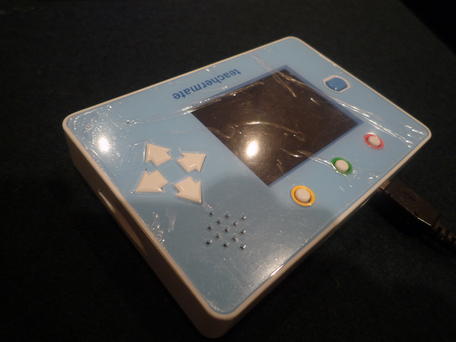
During the Assembly for Quality Basic Education in Kathmandu I had the possibility to play a bit with an interesting mini-computer designed for primary school education, the TeacherMate from Innovations for Learning (IfL), and to talk with Seth Weinberger, IfL Executive Director.
Of all the computers designed specifically as personal educational devices, the TeacherMate has one of the lowest costs for end users, about 60 USD per unit. Several of its software applications also work on the XO laptops I saw at work in Nepal.
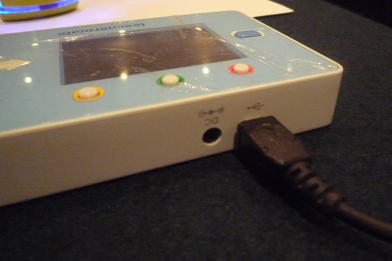
Hardware-wise, the Teachermate has a USB port for downloading software from the teacher’s computer, an SD card slot, a speaker and a microphone. The two last peripherals are particularly useful for learning foreign languages: students can listen to sentences spoken by native speakers, record themselves while repeating those sentences and then compare the two versions. The user interface consists of four arrow keys and four buttons of several colors.
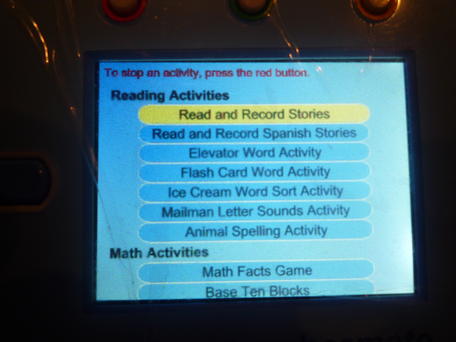
When you power it up, you get a menu which lists the available activities. The unit I had contained, among others, programs to read and record Spanish stories, practice spelling, sort words and do a few math exercises.
What’s the Teachermate place in the classroom?
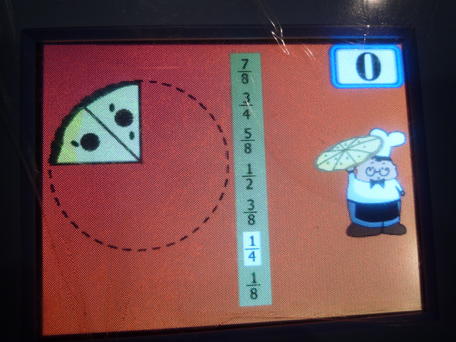
During the OLE Assembly, Seth explained that the Teachermate was not created to be used standalone, but to transform what happens inside the classroom, by integrating everything the children do with it with what the teacher is actually doing on her blackboard that day: everything a student does on a Teachermate is uploaded to the teacher’s computer, making it much easier to compare exercise results and keep track of everybody’s progresses. Since every student has an account, more children can share one TeacherMate. The management software also allow teachers to download into each Teachermate a different exercise or activity. This makes it possible to engage each child in the most productive way or to make him or her work in his/her native language.
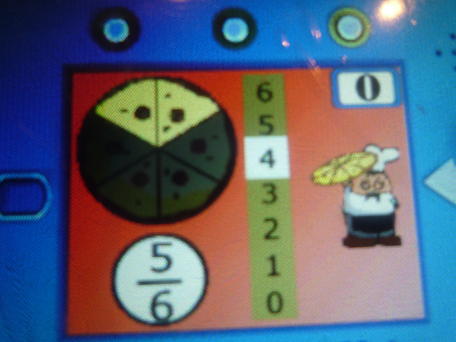
The computer that didn’t want to exist
What’s interesting about the Teachermate is the fact that its designers did not want to create the box. They only wanted to develop educational software. As Seth puts it, “3 years ago, when the software was ready, we realized that it could not be used by as many children as we wanted to reach, since normal computers are too big, too expensive, and too complex (too many keys!)."
Back then, the XO laptops were still too expensive and not yet easily available in the USA. Therefore, Seth said, IfL asked Nintendo if they were interested in porting the TeacherMate software to their consoles, but they declined saying that their business was entertainment, not education.
Now, what do you think of this, knowing that this year a School Edition DS was announced, or that Nintendo DS may be already used in Osaka schools? Personally, knowing how electronic waste becomes a bigger and bigger problem every year, it makes me sad to hear that people with a great idea are forced to build even more hardware than necessary to carry it on, but we digress.
In any case, said Seth, “IfL wants to get out of manufacturing. We consider the Teachermate as a bridge device to keep around until prices don’t fall, but we’ve already started to port our software to the iPod and other devices."
What do children and teachers think?
After the Kathmandu conference, I asked Seth what feedback IfL gets from children and teachers using the TeacherMate. Many attempts to bring technology to classroom fail because lack of adoption by the teachers. Seth told me that in their case, according to IfL surveys, “Teachers love our system, and so they use it. Of course, teacher acceptance is not sufficient but is a necessary precondition for success, and it looks like we are doing very well at this level."
Speaking of students he told me that, even if one wouldn’t expect it, the small screen makes the students focus more, not less. A handheld device also feels more personal, so children pay more attention to it, and is much more compatible with an age (5-7 years) when sitting still for long stretches feels like torture. Children, says Seth, “love being able to take the TeacherMates with them around the classroom. They often work with it under a desk. In rural schools you often find them under a tree (or up on a tree branch) with their TeacherMates."
Finally, Seth was also surprised to discover that, while IfL “added all sorts of fun animations and rewards to the activities, to motivate students”, children often seem to ignore them and like the TeacherMate just because “it’s helping us learn to read and do math.". Makes one think, doesn’t it?
Who writes this, why, and how to help
I am Marco Fioretti, tech writer and aspiring polymath doing human-digital research and popularization.
I do it because YOUR civil rights and the quality of YOUR life depend every year more on how software is used AROUND you.
To this end, I have already shared more than a million words on this blog, without any paywall or user tracking, and am sharing the next million through a newsletter, also without any paywall.
The more direct support I get, the more I can continue to inform for free parents, teachers, decision makers, and everybody else who should know more stuff like this. You can support me with paid subscriptions to my newsletter, donations via PayPal (mfioretti@nexaima.net) or LiberaPay, or in any of the other ways listed here.THANKS for your support!